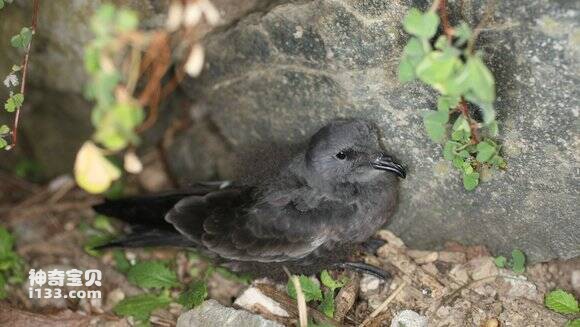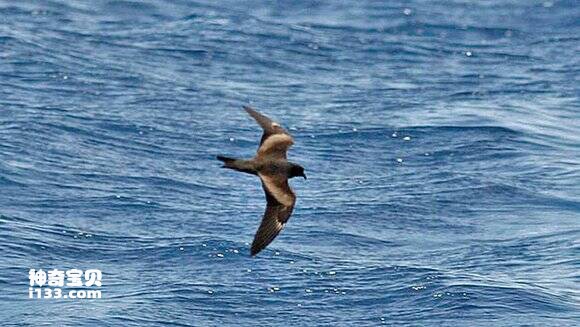Oceanodroma monorhis
IUCN
LCBasic Information
Scientific classification
- name:Oceanodroma monorhis
- Scientific Name:Oceanodroma monorhis,Hydrobates monorhis,Swinhoe's Storm-petrel,
- Outline:Waterfowl
- Family:
Vital signs
- length:About 18 cm
- Weight:No textual research information is available
- lifetime:No textual research information is available
Feature
When flying, the two wings have an M-shaped concave leading edge, which is close to the water surface, constantly changing the direction of flight, and the flying posture of the feet extending to the water surface from time to time
Distribution and Habitat
Origin: China, Indonesia, Japan, North Korea, South Korea, Malaysia, Russia, Singapore, Sri Lanka, Thailand, UAE.
Locations: Israel, Oman, Portugal, Seychelles, Spain, United Kingdom, Yemen.
Places of introduction unknown: Bangladesh, Cambodia, Christmas Island, India, Maldives, Myanmar, Pakistan, Philippines, Somalia, Vietnam.
In China, it is mainly distributed in the coastal areas of Fujian, Guangdong, Taiwan and Shandong and their nearby islands.
Small oceanic coastal birds that live on coasts and nearby islands and at sea during breeding and mainly at sea during non-breeding periods.
Appearance
Dark grey head and neck, light around the forehead and base of the mouth, dark grayish-brown back, shoulder and tail overlying feathers are also dark grayish-brown, with black feather axes, small wing overlying feathers, secondary flight feathers 哃 and primary flight feathers dark brown; Middle coverts, large coverts and secondary flyfeathers 哃 light brown inside, with white pinnacles, black tail feathers, black underwing and undertail coverts.
The iris is brown, the mouth is black, the feet are black, and the inner toe is white on both sides of the base of the middle toe.
Size measurement: body length 182 mm, rostral peak 13~15 mm; Wing 141~165 mm, tail 70~81 mm, tarsus 23~24.5 mm.
Near species differences: Similar species Oceanodroma Lcucorhoa has a white waist and a large individual, the difference is very obvious.
Details
Hydrobates monorhis is a small sea bird. Austin (1952) combined this species with O. cucorhoa. Bretagnolle et al. (1991) and Daw-son (1992) divided them into two separate species because of their morphological and acoustical differences. Zheng Zuoxin (1994), Inskipp, Lindsey and Duckworth (1996), and many other scholars have also supported their separation as two distinct species.

The black-tailed petrel often flies low over the sea in groups. Sometimes they flap their wings quickly, and sometimes they glide lightly over the water, resting and feeding on the surface. Occasionally he forages on the islands. Walking fast on the ground. Flying characteristics like terns, on the water more bounce and dive, never fly lightly on the water. Sometimes follow the boats.

Black fork tailed petrel mainly feeds on small fish, crustaceans, cephalopods and other small Marine animals. It squeaks when flying over breeding grounds and is usually silent at sea.

Brooke (2004) estimated the global population of black-tailed petrels to be around 100,000. Sato et al. (2010) estimated that there are at least 130,000 pairs worldwide. About 100 to 100,000 breeding pairs and 50 to 10,000 migratory birds in Taiwan, China; About 100 to 100,000 breeding pairs and 50 to 10,000 migratory birds in Korea; Japan has 100-100,000 breeding pairs and 50-10,000 migratory birds (Brazil 2009). In China, it is found only in the coastal areas of Shandong, Guangdong, Fujian and Taiwan, and it is rare and uncommon. The bird population size is expected to decline at a moderate rate over the next three generations, mainly due to the impact of alien species.
Listed on The IUCN Red List: Near Threatened Species (NT), 2015 assessment.
It was included in the List of Beneficial Terrestrial Wildlife under State Protection or of Important economic and scientific research Value issued by the State Forestry Administration of China on August 1, 2000. (Note: Item 11 of Ornithology)
Protect wild animals and eliminate wild meat.
Maintaining ecological balance is everyone's responsibility!








